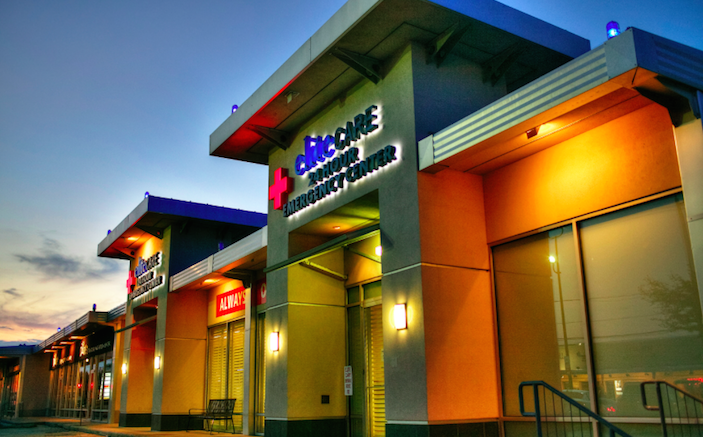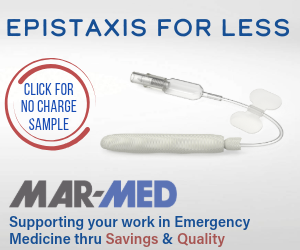With ED characteristics and outpatient accessibility, independent freestanding emergency care centers can deliver the change healthcare needs.
In an effort to control health care spending, payers and policymakers have focused efforts on keeping patients out of emergency departments (EDs). New delivery models like patient-centered medical homes (PCMHs) are explicitly measured by their ability to reduce ED visits. Reducing unnecessary health care costs is an important goal, but a singular focus on reducing ED visits is shortsighted. Even more expensive than ED visits are hospital admissions, which make up almost a third of all health care spending in the US. As the pivot point between the outpatient and inpatient worlds, the ED is in a unique position to help keep patients out of the hospital, and should be engaged in efforts to improve health care delivery.
The problem is that today, hospital-based EDs are, in many ways, designed to admit patients. The current health care system is built on a fee-for-service payment model, where admissions are the main source of revenue for hospitals, and the ED has become the main source of admissions [1]. Recent evidence suggests that up to 57% of ED visits are for intermediate-acuity conditions [2]. This includes conditions, such as non critically-ill patients with pneumonia, who can be often managed safely as outpatients, but who often get admitted to the hospital because it is difficult to coordinate a safe outpatient plan. While some hospitals pay lip service to helping emergency physicians coordinate outpatient care, the truth is that in a fee-for-service system, it will continue to be easier to admit patients to the hospital than to discharge them.
As new models of payment emerge for acute, unscheduled care, and the financial incentive to hospitalize diminishes, we will need new delivery models that can better align the ED with the outpatient world. The exponential growth of independent, non-hospital-affiliated freestanding emergency centers (IFECs) in states like Texas and Colorado could offer an innovative solution. IFECs are staffed by emergency physicians and function like hospital-based EDs. IFECs offer 24-hour services and similar diagnostic and treatment capabilities, but are not directly attached to a hospital. Because IFECs are not owned or operated by a hospital system, they represent a unique opportunity to reposition the role of the ED in the health care system. And if framed properly, they position emergency medicine as part of the solution to the high costs of hospital care [11].
Success and Criticisms of Freestanding EDs
The rapid growth of freestanding EDs, of which there are now nearly 400 in the US, has been alternately described as a “wildfire” or “wildflowers [3,4].” Freestanding EDs are popular with patients, because they offer a faster, more convenient alternative to hospital EDs, and generally receive high patient satisfaction scores [5]. In addition, early research suggests that freestanding facilities provide similar care to hospital-based EDs, even for time-critical conditions like STEMIs [6].
Yet with success has come backlash. Freestanding EDs are criticized for charging hospital-level facility fees despite the fact that they don’t have the same level of overhead costs as a full hospital. Since they charge as much as hospital EDs, policymakers and insurers are concerned that the convenience and efficiency of freestanding EDs will lure patients away from primary care providers, but result in ED bills for conditions that could have been handled in lower-cost settings. In addition, hospitals allege that IFECs, which are often built in affluent areas [7], poach well-insured, lower-acuity, higher margin patients [8]. This leaves hospitals EDs with a greater proportion of higher acuity, publicly insured, and uninsured patients, potentially threatening their financial viability.
There is, of course, some truth to these criticisms and no shortage of well-publicized anecdotes about people getting stuck with a big bill from a freestanding ED [9]. But in an era of healthcare transformation and disruptive innovation, we shouldn’t turn our backs on an idea that can align emergency care with the needs and preferences of patients.
Instead, imagine if we could leverage the innovation of IFECs to make emergency medicine a part of the solution to health care spending growth. By taking advantage of lower overhead costs, changing the way we charge for ED visits, partnering with outpatient providers to redefine the role of the ED, and making hospitals compete on price and quality for patients who need admission, IFECs could turn out to be a transformational innovation in health care.
Rethinking Charges
IFECs have argued that because they offer the same services as a hospital-based ED, they are justified in charging the same fees. But there is no rational way for any ED, hospital-based or freestanding, to defend charging thousands of dollars for an urgent care visit that takes 10 minutes of a provider’s time. As health insurance deductibles rise, and more of the burden of payment shifts onto patients, it is likely that patients will seek providers who can offer more competitive pricing.
While IFECs have some of the same costs as hospital EDs, including 24-hour staffing and high-cost imaging, they have lower overhead costs than hospitals for things like real estate, hospitality services, and disaster preparedness. In addition, IFECs don’t have to cross-subsidize other less profitable departments, like psychiatry and social work. This means that IFECs could still maintain a healthy profit with lower prices, making them more nimble than hospitals, and giving them the financial flexibility to try different ways of charging for their services. By leveraging these advantages, IFECs could be the ideal setting for developing and refining alternative payment models for acute, unscheduled care.
Medicare has been heavily promoting new, value-based payment models that place some financial risk on providers as part of an effort to reduce costs. One example is the use of “warrantied” episode-of-care payments, in which the fee paid up front for an acute condition (e.g. pneumonia) would include any additional care needed for a pre-determined time period after the initial visit. In this model, the provider takes on the risk of unexpected downstream costs and visits. Because IFECs typically have lower patient volumes and acuity than hospital EDs, they are in a better position to manage the risk of additional visits, and with higher margins, they could more safely take on the financial risk.
But the payment innovations could also be much simpler, like charging urgent care-level fees for minor conditions that could have been handled by a primary care provider or urgent care center. By doing so, IFECs would create a more rational fee structure for acute, unscheduled care, and position themselves as leaders in health care reform. Rather than being seen as a threat by state legislatures, insurers, and Medicare administrators, IFECs could end up being key partners in promoting higher value care and price transparency.
Embracing the Outpatient World
Technically, EDs are considered part of the outpatient world. But today, most EDs are physically attached to the hospital; ED physicians are either directly or indirectly contracted by the hospital; ED nursing and facility budgets are usually controlled by the hospital; and ED physicians spend more of their time interacting with hospitalists and hospital-based consultants than with primary care providers. There are important benefits to this relationship: easy admissions for patients who require hospitalization, easy access to in-house specialists, and most importantly, easy access to critical services like operating rooms and intensive care units. But to recast the ED as a partner in health care delivery reform, we need to reposition ourselves as better intermediaries between outpatient and inpatient care.
Because IFECs are not part of a hospital, they are well positioned to establish emergency medicine as a partner in outpatient care. IFECs have less of an incentive to admit patients than do hospital-based EDs, because they do not directly benefit financially from admissions. Rather, by preventing avoidable admissions, they can establish a reputation that will increase their referrals, especially among outpatient providers whose own practices benefit financially from keeping people out of the hospital. And because IFECs control their own budgets, they have more control than some hospital-based EDs in how they invest in resources that facilitate safe discharge, like care coordinators and social workers. But they could also go further, developing systems for next-day ED follow-ups for patients without good follow-up plans, or partnering more closely with visiting-nurse agencies, physical therapists, and even health coaches to offer safer, better discharge options.
Although today’s discourse seems to pit primary care and emergency care against each other, the truth is that emergency departments can and should play a major complementary role for primary care physicians (PCPs) and other outpatient providers. Currently, when an outpatient provider feels that a patient needs an urgent test, the patient is usually sent to the ED, waits in line, gets evaluated by a second provider, and then gets the test. But what if the ED could serve as a 24-hour outpatient diagnostic center? IFECs tend to have lower patient volumes than hospital-based EDs, but still have to cover the fixed costs of a 24-hour facility, including laboratory and radiology services. By offering these as outpatient services without requiring patients to check into the ED, they could generate a new revenue stream while giving patients and outpatient providers a cheaper, faster, and more sensible 24-hour option for outpatient diagnostic testing.
Making Hospitals Compete
Over the past several years, hospital mergers have redrawn the landscape of care in much of the US. Hospital leaders argue that consolidation improves efficiency, promotes the integration and continuity of care, and enables them to take on population-wide contracts that will lead to higher value care. Unfortunately, economists have also shown that when hospitals merge, prices rise [10]. The consolidation in the industry also leaves patients with less choice of where to receive their care. And with less competition, there is also less incentive for hospitals to invest in the quality and experience of care.
For patients who require hospitalization, IFECs could offer a better way to navigate the health care system. Because IFECs are not financially affiliated with a hospital, they can more easily act as impartial advocates for their patients. Instead of simply admitting patients to the nearest hospital, IFECs could let stable patients choose from a broader range of hospitals, including hospitals that specialize or excel in the area of care that the patient needs, like orthopedic surgery or geriatrics.
Because ED admissions make up the bulk of unscheduled hospital admissions, hospitals will want to compete for IFEC admissions. This creates an opportunity to bring meaningful competition to an industry that sorely lacks it. Imagine if IFECs required that each hospital share information about price and outcomes for every procedure before including it in the ‘menu’ of options for their patients. Instead of receiving a guaranteed stream of patients based simply on geography, hospitals would have to work hard to earn their business. By putting patients at the center of the process, IFECs could redefine the rules of health care and set up a system based on transparency and choice.
Health care today is in a period of upheaval and rapid change that is riddled with controversy. It is tempting to either resist change entirely or embrace a preconceived idea of where we ‘should’ go. But if there is one thing American health care is good at, it’s innovation. IFECs are still a new and imperfect model, and there are legitimate concerns about their potential impact on the health care industry. But they also represent an innovative model of care that empowers emergency physicians to do what is best for their patients. And with a bit of forward-looking imagination, IFECs could end up playing an important role in saving American health care.
REFERENCES
- Kocher KE, Dimick JB, Nallamothu BK. Changes in the Source of Unscheduled Hospitalizations in the United States. Med Care. 2013;51(8):689-698.
- Smulowitz PB, Honigman L, Landon BE. A Novel Approach to Identifying Targets for Cost Reduction in the Emergency Department. Annals of emergency medicine. 2013;61(3):293-300.
- “Wildfire” Growth Of Freestanding ERs Raises Concerns About Cost. Kaiser Health News. Published July 15, 2013. http://khn.org/news/stand-alone-emergency-rooms. Accessed January 29, 2016.
- Free-standing ERs eye lobbying to win state approval for growth. Modern Healthcare. Published July 4, 2015. http://www.modernhealthcare.com/article/20150704/MAGAZINE/307049969. Accessed January 29, 2016.
- Andrews M. A wait at the ER measured in minutes, not hours. A new type of freestanding emergency room promises good medicine plus customer service. US News World Rep. 2008;145(7):79-80.
- Simon EL, Griffin P, Medepalli K, et al. Door-to-Balloon Times from Freestanding Emergency Departments Meet ST-Segment Elevation Myocardial Infarction Reperfusion Guidelines. J Emerg Med. 2014;46(5):734-740.
- Osterweil N. Freestanding EDs Find Homes in “Better” Neighborhoods. Medscape. http://www.medscape.com/viewarticle/853561. Published November 2, 2015. Accessed January 29, 2016.
- Henneman PL, Nathanson BH, Li H, et al. Is Outpatient Emergency Department Care Profitable? Hourly Contribution Margins by Insurance for Patients Discharged From an Emergency Department. Annals of emergency medicine. 2014;63(4):404–411
- Dewberry D. Freestanding Emergency Rooms Can Be Confusing, Costly. NBC News-DFW. http://www.nbcdfw.com/investigations/Freestanding-Emergency-Rooms-Can-Be-Confusing-Costly-301476201.html. Published April 27, 2015. Accessed January 31, 2016.
- Cooper Z, Craig SV, Gaynor M, Reenen JV. The Price Ain’t Right? Hospital Prices and Health Spending on the Privately Insured. National Bureau of Economic Research Working Paper Series. 2015;No. 21815.
- Harish NJ, Wiler JL, Zane RD. “How the Freestanding Emergency Department Boom Can Help Patients.” NEJM Catalyst. February 18, 2016. http://catalyst.nejm.org/how-the-freestanding-emergency-department-boom-can-help-patients/.







2 Comments
It sounds likes it’s all about money, who can pay for it and then who keeps it. I agree that IFECs may be more readily available to patients when they can’t see their PMD’s and also because they don’t want to wait in a Hospital based ED. The catch: Money. I’m sure CT and MRI are not that readily available or patients will have to be send to hospital or other outpatient facilities, and there might be some increase UR issues as well. Bottom line, they are privately own facilities and you might have to be an investor. So the question is, can you practice real medicine or will it have to depend all about the $. Just curious how it works. Who actually gets the benefit of this set up?
To respond to DA: The new “set up” offered by IFECs offers a great deal of benefit to patients, physicians and nurses who are treated by or work in them. The patients receive high quality care for even the most extreme emergency conditions by highly accountable staff who are focused on their patients. Most IFECs are exclusively staffed by highly tenured physician and nursing staff who are veterans of very busy hospital based EDs. IFECs are equipped with at least comparable if not superior equipment that hospital EDs. In the IFECs that I am most familiar with the IFECs are equipped with X-ray, ultrasound and 64 slice CT scanners capable of the latest heart scans including calcium scoring and CCTA. This with a full on site blood lab. The IFECs that I am familiar with are actually better equipped than most hospital based EDs.
It is actually not about the money for 99% of those involved in IFECs. Instead, it is about finally being able to offer the absolute best care possible for our patients. Most of us veteran EM docs have been witness to a severe decrease in our ability to practice high quality emergency medicine in hospital based EDs. The reasons for not being capable of offering our hospital based ED patients the best are often multifactorial but they are always out of our control. In the IFEC setting physicians and nurses have complete control.
I completely agree with the Author of this article that via the IFEC model emergency medicine docs have a golden opportunity to become part of the solution to some of our healthcare systems financial woes. By giving patients choices in where they receive emergency care IFECs will ultimately drive quality up while lowering price.